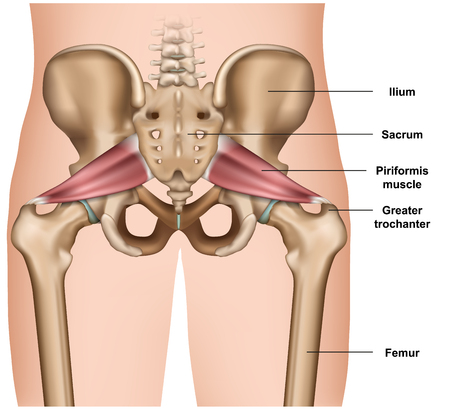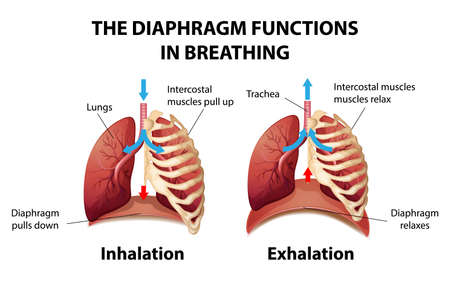Understanding the Shoulder Joint and Common Injuries
The shoulder is one of the most complex and mobile joints in the human body, enabling a wide range of movements essential for everyday activities. It comprises several key structures, including the humerus (upper arm bone), scapula (shoulder blade), clavicle (collarbone), and a group of muscles and tendons known as the rotator cuff. This intricate anatomy allows for impressive flexibility but also makes the shoulder particularly susceptible to musculoskeletal injuries.
Key Components of Shoulder Anatomy
At the core of shoulder function are the ball-and-socket joint and surrounding soft tissues. The rotator cuff muscles stabilise the joint, while ligaments and cartilage provide support and facilitate smooth movement. The bursae—small fluid-filled sacs—help reduce friction during motion, enhancing overall joint health.
Common Musculoskeletal Injuries
Shoulder injuries are prevalent among individuals of all ages, often arising from overuse, acute trauma, or degenerative changes. Typical conditions include rotator cuff tears, impingement syndrome, frozen shoulder (adhesive capsulitis), dislocations, and labral tears. These injuries can significantly impact movement by causing pain, stiffness, weakness, or instability.
The Impact on Movement and Recovery
Musculoskeletal injuries of the shoulder can hinder daily tasks such as lifting, reaching, or even dressing. Early identification and understanding of the underlying injury are crucial for effective rehabilitation. A comprehensive recovery plan considers not only the anatomical structures involved but also individual patient needs and lifestyle demands. Through targeted rehabilitation strategies, it is possible to restore function, alleviate discomfort, and promote long-term shoulder health.
2. Initial Assessment and Setting Realistic Goals
Effective shoulder rehabilitation starts with a thorough initial assessment, which is essential for tailoring recovery strategies to each individuals needs. In the UK, physiotherapists and healthcare professionals employ a patient-centred approach, ensuring that both clinical findings and personal aspirations are considered when setting rehabilitation goals.
Comprehensive Shoulder Assessment
The assessment process includes a detailed history and physical examination. Key elements are:
| Assessment Component | Description | Purpose |
|---|---|---|
| Medical History | Review of previous injuries, surgeries, and current symptoms | Identifies underlying factors influencing recovery |
| Pain Evaluation | Location, intensity (often using a Visual Analogue Scale), and triggers | Guides pain management strategies |
| Range of Motion (ROM) | Measurement of active and passive movement in all planes | Establishes baseline mobility |
| Strength Testing | Assessment of muscle power around the shoulder complex | Highlights specific weaknesses |
| Functional Assessment | Evaluation of daily activities such as dressing or reaching overhead | Links clinical findings to real-life challenges |
| Psycho-social Factors | Anxiety, motivation, support systems, work demands | Acknowledges wider influences on rehabilitation adherence and success |
Setting Patient-Centred, Achievable Goals
Goal-setting is a collaborative process between clinician and patient. The focus is on creating realistic targets that reflect both the clinical picture and what matters most to the individual. This approach not only motivates patients but also improves adherence to the rehabilitation plan.
S.M.A.R.T. Goal Framework in Rehabilitation
| Criteria | Description | Example (Shoulder Rehab) |
|---|---|---|
| Specific | The goal clearly defines what will be achieved. | “Regain ability to lift a kettle with right arm.” |
| Measurable | The outcome can be quantified or assessed objectively. | “Increase shoulder flexion by 30 degrees.” |
| Achievable | The target is realistic given the patient’s starting point. | “Complete home exercises 5 days per week.” |
| Relevant | The goal aligns with the patients personal needs or lifestyle. | “Return to gardening within 8 weeks.” |
| Time-bound | A clear timeframe for achievement is set. | “Achieve pain-free overhead reach in 6 weeks.” |
Cultural Considerations in the UK Context
Incorporating the patient’s daily life—such as returning to work, driving, or participating in recreational activities popular in the UK (e.g., bowls, cricket)—ensures relevance and fosters engagement. Open dialogue about barriers such as NHS wait times or transport issues should also inform goal-setting to maximise practicality and support ongoing participation.
A robust initial assessment combined with meaningful, achievable targets creates a solid foundation for successful musculoskeletal shoulder rehabilitation in any UK healthcare setting.

3. Phases of Shoulder Rehabilitation
In UK physiotherapy practice, shoulder rehabilitation is approached as a structured, staged process designed to optimise musculoskeletal recovery. Understanding these distinct phases allows both clinicians and patients to set realistic expectations and ensure the most effective outcomes. Below, we break down each phase with an emphasis on patient safety, gradual progression, and evidence-based interventions.
Acute Phase: Protect and Manage Symptoms
The initial stage focuses on protecting the injured structures, managing pain, and reducing inflammation. Common interventions in this phase include rest, gentle range-of-motion exercises within pain-free limits, and ice therapy. NHS guidelines often recommend patient education regarding posture and activity modification to prevent aggravation of symptoms. The goal here is to avoid further injury while maintaining joint mobility where possible.
Sub-Acute Phase: Restore Range of Motion
As symptoms settle, the priority shifts towards restoring normal shoulder movement. UK physiotherapists commonly employ targeted stretching routines and gentle mobilisations. Exercises may be adapted for home use, with clear instructions provided to ensure safety and compliance. At this stage, manual therapy might also be introduced if appropriate to address specific restrictions in joint or soft tissue mobility.
Strengthening Phase: Build Muscular Support
Once adequate movement is regained without significant pain, strengthening exercises become central. Emphasis is placed on the rotator cuff and scapular stabilisers—crucial muscle groups for shoulder stability. Progressive resistance training using therabands or light weights is tailored to the individual’s functional goals, whether returning to work, sport, or everyday activities. Physiotherapists monitor progress closely to prevent overloading healing tissues.
Functional Recovery Phase: Return to Activity
The final phase aims for full restoration of function, focusing on sport-specific or occupational tasks as relevant. Functional exercises mimic real-life movements and challenge balance, coordination, and endurance. Patients are guided through graded exposure to previous activities under professional supervision to minimise risk of re-injury. This phase aligns with UK best practice by promoting long-term self-management strategies and ongoing exercise adherence.
A Patient-Centred Approach
Throughout all phases of rehabilitation, the UK model prioritises patient education, shared decision-making, and regular re-assessment to adapt treatment plans as needed. By following this comprehensive, phased approach, individuals can achieve optimal recovery outcomes and confidently return to their chosen activities.
4. Essential Exercises and Practical Tips
Shoulder rehabilitation requires a well-structured approach, combining evidence-based exercises with practical advice to encourage gradual improvement. Here, we present a selection of key movements and everyday strategies to help restore strength, flexibility, and confidence in your shoulder, all tailored for individuals recovering from musculoskeletal injuries.
Evidence-Based Exercises for Shoulder Recovery
| Exercise | Description | Frequency |
|---|---|---|
| Pendulum Swings | Stand leaning forward, support yourself with the uninjured arm on a table or chair. Let the affected arm dangle and gently swing it in circles, clockwise and anti-clockwise. | 2–3 minutes daily |
| Wall Crawls | Face a wall and walk your fingers up as high as comfortable. Pause, then slowly walk them back down. | 10 repetitions, twice daily |
| Isometric External Rotation | With your elbow bent at 90 degrees and tucked by your side, press the back of your hand against a wall without moving your arm. | Hold for 5 seconds, repeat 10 times |
| Scapular Squeezes | Sit or stand upright. Draw your shoulder blades together gently, hold briefly, then release. | 15 repetitions, once daily |
Practical Tips for Everyday Life
- Use an ice pack wrapped in a tea towel after exercise if you notice swelling or discomfort—never apply ice directly to the skin.
- Pace yourself by breaking tasks into smaller chunks; for example, when making a cuppa or hanging out the washing, use both arms where possible to distribute the load.
- Avoid lifting heavy shopping bags with one arm; opt for a rucksack or share the weight between both hands to reduce strain.
- If you drive, adjust your seat so that steering feels comfortable and doesnt require overreaching.
Building Confidence Gradually
It’s important to progress at your own pace. Start with gentle movements and increase intensity as your comfort improves. If you experience pain that persists beyond mild discomfort or limits your range of movement, consult your physiotherapist or GP before continuing.
When to Seek Further Advice
If you notice swelling that does not settle overnight, increasing weakness, or any tingling sensations down your arm, seek professional guidance promptly. Your recovery journey is unique—these exercises and tips are here to support you every step of the way.
5. Preventing Re-injury and Long-Term Care
Establishing Safe Routines for Ongoing Shoulder Health
Maintaining the health of your shoulder after rehabilitation is just as important as the initial recovery phase. Adopting safe and effective routines can reduce the risk of re-injury and support long-term musculoskeletal wellness. It is crucial to continue with prescribed strengthening and flexibility exercises, even after you feel fully recovered, as these help to maintain muscle balance and joint stability. Regular check-ins with your physiotherapist or healthcare provider are recommended to ensure your progress remains on track and any emerging issues are identified early.
Returning to Work
Resuming work, especially in roles common across the UK such as office-based jobs, manual labour, or healthcare positions, requires careful consideration. Gradually increase your activity levels, starting with lighter duties if possible. For those working at a desk, pay attention to ergonomic set-ups: ensure your workstation promotes good posture and take regular breaks to stretch your shoulder muscles. If your job involves lifting or repetitive arm movements, seek guidance from occupational health services on safe techniques and appropriate modifications.
Getting Back into Sport and Physical Activity
Sport and recreational activities play an important part in many people’s lives across the UK, whether it’s playing football, cricket, swimming, golf, or participating in fitness classes. Before returning to sport, make sure you have regained full range of motion and strength in your shoulder. Begin with low-impact drills or non-contact practice sessions before progressing to full participation. Always warm up thoroughly and use proper technique to prevent unnecessary strain on your recovering shoulder. Consulting a sports physiotherapist can provide tailored advice specific to your chosen activity.
Everyday Activities and Preventative Strategies
- Lifting safely: Use both hands where possible, keep objects close to your body, and avoid sudden jerky movements.
- Household chores: Break tasks into smaller steps and use adaptive tools if necessary (e.g., lightweight cookware or long-handled cleaning tools).
- Driving: Adjust seat position for comfort and support; take breaks during longer journeys to move and stretch your shoulder.
If you notice any recurring pain, weakness, or reduced mobility during daily tasks, do not ignore these signs—early intervention can prevent further complications.
Building Lifelong Habits
The key to long-term success is integrating healthy habits into everyday life. Stay active with regular exercise suited to your abilities, maintain good posture throughout the day, and listen to your body’s signals. Attend scheduled follow-up appointments and consider joining local support groups or community classes focused on musculoskeletal health—these are widely available throughout the UK through NHS services or community centres.
Your Partner in Ongoing Recovery
Remember, comprehensive shoulder care extends beyond the clinic. By taking proactive steps in prevention and being mindful of daily activities specific to life in the UK, you can enjoy a confident return to work, sport, and all that everyday life has to offer—while safeguarding your long-term shoulder health.
6. When to Seek Specialist Support
While many individuals experience significant improvement in shoulder function through a structured rehabilitation programme, there are circumstances when seeking the expertise of a healthcare professional is essential. Recognising these warning signs and knowing when to consult a specialist ensures safe and effective recovery, and prevents further complications.
Recognising Warning Signs
If you notice any of the following symptoms during your shoulder rehabilitation journey, it is advisable to seek further assessment:
- Persistent or worsening pain: Discomfort that does not improve with rest or prescribed exercises may indicate an underlying issue that needs further investigation.
- Reduced range of motion: Inability to move your shoulder as freely as before, especially if movement becomes progressively limited.
- Swelling or redness: Unexplained swelling, warmth, or redness around the shoulder joint could be a sign of infection or inflammation.
- Weakness or instability: Feeling that your shoulder is giving way, or experiencing sudden weakness during daily tasks.
- Numbness or tingling: Sensations affecting your arm, hand, or fingers may point towards nerve involvement.
When to Contact Your GP
If you experience any of the above symptoms, book an appointment with your GP. They can perform an initial assessment and decide whether you require further tests or a referral to a physiotherapist or orthopaedic specialist. Under the NHS, your GP is often the first point of contact for musculoskeletal concerns and can guide you through the appropriate care pathway.
Urgent Situations
If you have sustained a traumatic injury (such as a fall or direct blow), are unable to move your arm at all, develop sudden severe pain, or notice deformity in the shoulder region, seek immediate medical attention by visiting A&E. These could indicate fractures, dislocations, or other serious conditions requiring prompt intervention.
Accessing Specialist Care
Your GP may refer you for imaging (such as X-rays or MRI) and onward referral to:
- Physiotherapist: For tailored rehabilitation plans and hands-on therapy within NHS clinics or private practices.
- Orthopaedic specialist: For surgical opinions, advanced diagnostics, or complex cases where conservative management has not been effective.
NHS vs Private Healthcare Options
You may choose to access specialist services through the NHS or opt for private healthcare for faster appointments and greater choice over clinicians. Be sure to discuss all available options with your GP so you can make an informed decision based on your needs and preferences.
Your Ongoing Role in Recovery
Your engagement and communication with healthcare professionals are vital throughout your recovery. Always report any changes in your symptoms promptly and follow their advice closely for the best possible outcomes in shoulder rehabilitation.


